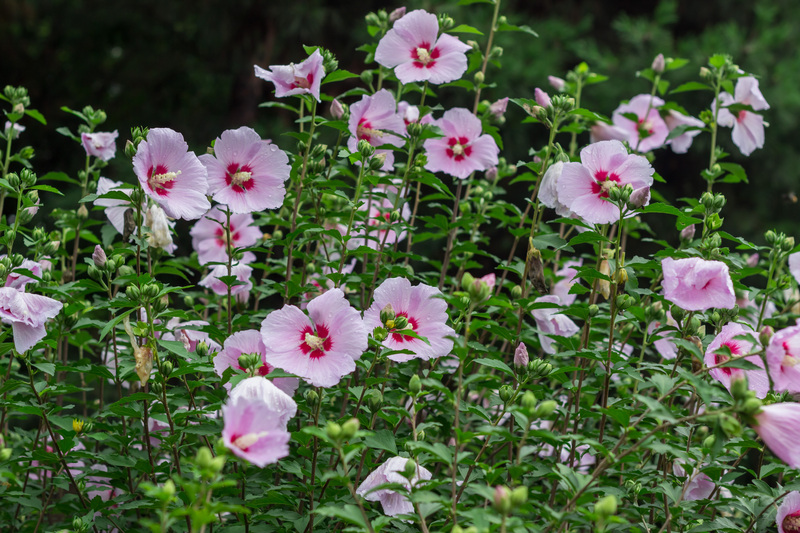Crafting Gardens that Thrive Even When the Wind Blows
Posted on 30/06/2025
Crafting Gardens that Thrive Even When the Wind Blows
Gardening in windy locations brings a unique set of challenges, from broken stems and battered blooms to dried-out soil and stressed plants. Yet, with thoughtful planning and smart plant choices, it's entirely possible to craft gardens that thrive even when the wind blows hardest.
Understanding the Impact of Wind on the Garden
Before you begin designing a resilient garden, it's crucial to understand how wind affects your outdoor space. Wind does more than just rustle leaves; it can dry out soil, strip moisture from plants, cause physical damage, and lower temperatures, especially in exposed areas. These factors all contribute to creating a harsher environment for your plants.
The Common Problems Caused by Wind
- Broken branches and stems: Intense gusts may snap stems, especially with delicate or tall plants.
- Soil erosion: Wind can blow away loose soil, disturbing roots and exposing seedlings.
- Desiccation: Wind increases evaporation rates, quickly drying out both the soil and plants.
- Reduced pollinator visits: Persistent wind can make it hard for pollinators to land, impacting your garden's productivity.
- Lower plant temperatures: Wind can chill plants and create microclimates that slow down growth.

Key Principles for Windproof Garden Design
The secret to gardening in windy areas lies in working with the conditions, not against them. By blending clever design, wind-resistant plants, and sustainable practices, you can build a stunning landscape that withstands whatever the breeze brings.
1. Assess Your Site's Exposure
Start by observing how wind moves through your garden at different times of day and across the seasons. Look for:
- Prevailing wind directions (where does wind come from most often?)
- Areas sheltered by fences, buildings, or trees
- Vulnerable spots where wind tunnels through or always seems stronger
2. Create Effective Windbreaks
Windbreaks are your best defense in gardens that must survive wind. They reduce wind speed, protect fragile plants, and can even create a mild microclimate.
- Living windbreaks: Hedges, dense shrub rows, or robust trees serve as natural screens. Top choices include evergreen conifers, bamboo, or tough native shrubs.
- Man-made barriers: Fences (especially slatted or lattice styles that allow some airflow) and trellises with climbing plants offer quick relief.
Pro Tip: Windbreaks that allow 30-50% of wind to pass through are more effective than solid barriers, which can cause turbulence.
3. Choose Wind-Resistant Plants
Crafting wind-tolerant gardens begins with the right plant list. Look for species that are low-growing, have flexible stems, and small, tough leaves.
- Groundcovers: Ajuga, creeping thyme, vinca minor
- Ornamental grasses: Panicum, Miscanthus, Festuca - they bend with the wind and reduce soil erosion
- Wind-tough shrubs: Berberis, Escallonia, Oleaster, Cotoneaster
- Perennials: Echinacea, Sedum, Lavender, Stachys - all great for exposed spots
- Native plants: Often best-suited to local wind patterns; check with your regional extension office
Tip: Avoid plants with large, fragile leaves, tall flower spikes, or hollow stems in the windiest places.
4. Plant in Layers for Added Protection
Achieve wind-resilient garden design by arranging your plants in natural layers. Position tough windbreak species to the exposed edge, then tuck more delicate varieties behind.
- Outer layer: Robust trees or shrubs that bear the brunt
- Middle layer: Medium shrubs or tall perennials
- Inner layer: Fragile flowers, herbs, and vegetables
This layered approach mimics nature and helps every plant find the shelter it needs to thrive, even when the wind blows.
5. Mulch and Soil Care for Windy Sites
Wind strips moisture and erodes topsoil, so conserving water and maintaining healthy earth are crucial steps.
- Use organic mulches: Wood chips, bark, straw, or compost stabilize soil, suppress weeds, and retain moisture.
- Plant groundcovers: Living mulches help prevent erosion on slopes and open beds.
- Water deeply and less often: This encourages deep roots that withstand drying winds.
- Add organic matter: Amend soil regularly to foster resilience and water-holding capacity.
Stylish and Functional Wind-Reliant Garden Features
Wind doesn't have to be a foe--it can be an inspiration for unique garden design. Here's how to turn challenges into stylish statements:
Dynamic Planting Schemes
Ornamental grasses and flexible perennials that sway in the breeze bring movement and texture to your plot.
- Mix textures: Pair hardy evergreens with feathery grasses
- Contrast forms: Soft mounds and upright spires evoke interest year-round
- Seasonal color: Use tough, windproof annuals like calendula or nasturtium for color pops
Artful Windbreaks and Screens
Transform barriers into beautiful backdrops with painted fences, woven willow screens, or sculptural trellises. Add vines like Honeysuckle or Clematis for natural softness.
Garden Structures that Work with the Wind
- Gabion walls: Filled with rock, they block wind and add modern flair
- Strategic seating: Place benches in sheltered nooks for comfortable lounging
- Wind chimes & kinetic art: Let your garden sing and move with every puff
Special Considerations for Edible and Vegetable Gardens Exposed to Wind
Raising fruits and vegetables in blustery spots requires careful strategies to ensure bounty and beauty.
- Use wind-tolerant crops: Leafy greens, potatoes, carrots, onions, and herbs like rosemary and sage tend to do well.
- Sturdy supports: Stake taller plants (such as tomatoes or beans) and check ties after gales.
- Temporary screens: Place mesh or fleece around young seedlings for initial protection.
- Row orientation: Plant rows perpendicular to prevailing winds to prevent wind tunnels between beds.
Raised beds help by warming soil and improving drainage--great benefits in wind-exposed gardens.
Frequently Asked Questions about Gardening in Windy Areas
How can I protect my garden from strong winds naturally?
Planting dense hedges, wind-tough shrubs, and flexible grasses on the windward side of your garden is the most natural way. Over time, these living windbreaks create a buffer zone and a more sheltered microclimate inside.
Are there vegetables that can handle wind better than others?
Yes! Root vegetables like carrots, turnips, and potatoes, and leafy crops such as kale, spinach, and Swiss chard, tend to thrive in exposed gardens. Herbs with woody stems, like thyme and rosemary, also perform admirably well.
What's the best material for windbreak fencing?
Fencing that lets some airflow through--such as slatted wood, mesh, or woven willow--is much more effective than a solid barrier. Solid fences can cause swirling turbulence on the protected side, damaging more fragile plants.
Does mulch really help in windy gardens?
Absolutely! Mulch prevents the wind from stripping topsoil, holds moisture, moderates temperature, and helps plants stay hydrated even during long, windy spells.

Top Wind-Proof Garden Plants and Their Benefits
- Boxwood (Buxus): Compact, dense, ideal for formal windbreak hedges
- Sea Buckthorn (Hippophae rhamnoides): Tough, salt-tolerant, edible berries
- Russian Sage (Perovskia atriplicifolia): Silvery leaves, tall, yet flexible stems
- Juniper (Juniperus): Evergreen, drought-tolerant, low-maintenance
- Miscanthus: Ornamental grass providing movement and screening
- Creeping Thyme: Groundcover and pollinator favorite
- Lavender: Resilient, fragrant, doubles as a pollinator haven
Conclusion: Gardens That Flourish on the Windy Side
Gardening where the wind always blows can feel daunting, but it's full of creative possibilities. Armed with knowledge and the right approach, you can craft windswept gardens that don't just survive--but absolutely thrive.
Focus on layered windbreaks, smart plant selection, robust soil care, and creative wind-friendly design, and your outdoor haven will reward you with beauty, movement, and resilience for years to come. No matter how hard the wind blows, your thoughtfully designed garden will stand strong--transforming challenge into opportunity and drawing admiration for its vitality.
Turn your windy plot into a lush retreat, and prove that a garden can thrive--even when the wind blows!

